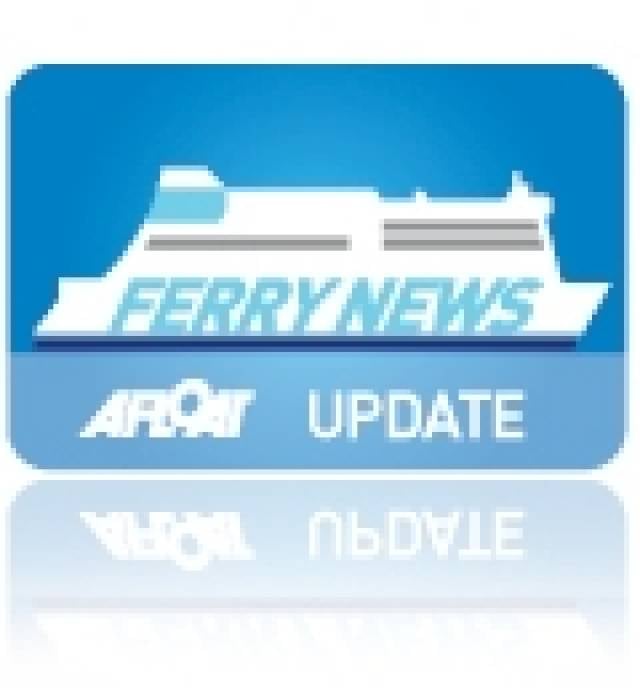#PontAven10years – This day ten years ago Brittany Ferries flagship cruiseferry Pont-Aven, was named in a ceremony, by her Breton owners in Roscoff, from where the luxury vessel sailed last night to Cork Harbour and returns to France this afternoon, writes Jehan Ashmore.
Pont-Aven is named after an attractive small Breton town also known as the 'cité des peintres' as the location drew artists to sketch its picturesque scenery.
Among those drawn to paint scenes of Pont-Aven were Monet and the flagship celebrates the heritage of its namesake through of course it paintings, even boosting among its artwork collection a painting by Gaugin.
She was designed primarily for the UK-Spain market in which she made her maiden voyage from Plymouth to Santander on 24 March 2004, with crowds lining Plymouth harbour to cheer her off.
Further maiden voyages included her English Channel route from Plymouth to Roscoff which included a reception on 27 March. She made her 'Irish' maiden crossing to Cork's Ringaskiddy Ferry Terminal arriving on 2 April. Later that month, on 26 April she was officially named in Roscoff.
A decade on and at 41,700 tonnes, the 184m Pont-Aven, remains an impressive vessel within Brittany Ferries modern fleet. She has a 2,400 passenger capacity and crew of 470 which service the luxurious facilities which can easily be described as cruiseferry standards.
Pont-Aven is unique to any cruiseferry serving Ireland as she features the Finistère indoor swimming pool offering sea-views on a high-deck and with an adjoining bar.
Also among her extensive amenities is Le Fastnet Piano Bar to reflect her Irish trading route connections with her season-only sailing schedule operating to a weekend round-trip from Roscoff to Cork.
Pont-Aven was custom-built for Britanny Ferries by Meyer Werft shipyward in Papenburg, Germany, to serve the UK-Spain market as well to the Breton-Cornwall link between Roscoff and Plymouth.
The western Engish Channel route was Brittany Ferries first route in 1973 with its origins stemming from exporting Breton vegetable produce to the UK market. Since then the company have dramatically expanded to offer gite, cottages, chalets holidays and more.
The Irish service followed five years afterwards and the Roscoff-Cork route is currently the only ferry route from Munster and therefore the longest continous operating service since its inception in 1978.
In addition to the the Irish route, Pont-Aven is kept busy linking three other nations on an intensive schedule. In order to maintain the sailing roster, the 28 knot Pont-Aven can achieve this from an engine power of 50,400 kW and propulsion power of 43,200 kW.






























































